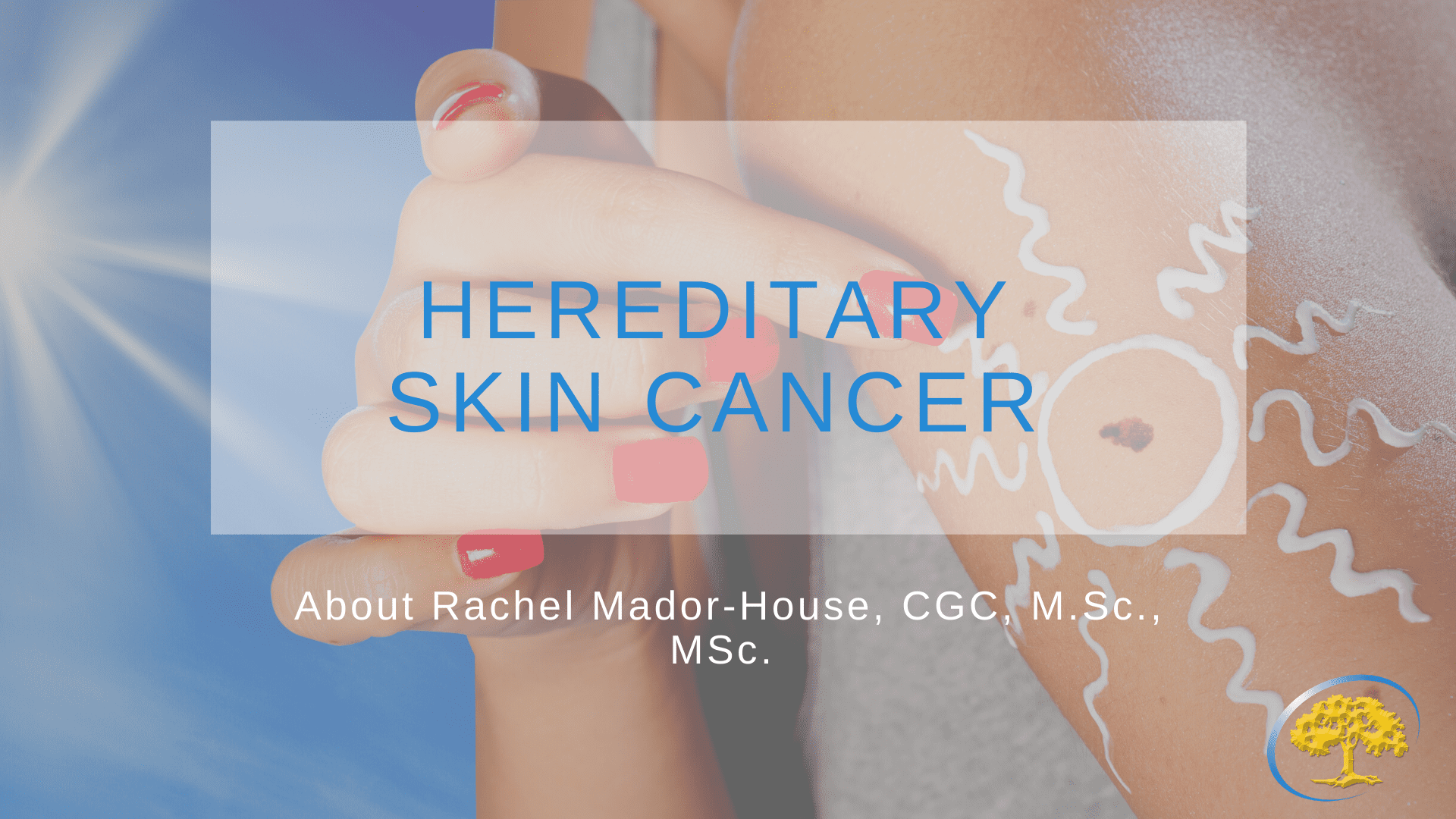
Posted 4 years ago
Hereditary Skin Cancer
Here’s a shocking truth: About 40 – 50% of Americans who live to the age of 65 will have skin cancer at least once.
The rates can be even higher in Arizona and other States that enjoy year-around sunshine. The most common types of skin cancers in the United States are basal cell carcinoma and squamous cell carcinomas. These are referred to as non-melanoma skin cancers and are generally the result of sun exposure.
For important information about keeping our skin safe from harmful sun rays make sure to see to read about Skin Cancer Prevention at the bottom of this article.
Melanoma is the rarest form of skin cancer. For information about the ABCDEs of melanoma, check out the bottom of this article. About 5 – 10% of people with melanoma have a genetic risk factor that made them susceptible to that skin cancer.
We all have a set of genes that we are born with that act as our body guards from melanoma. They provide us with protection from melanoma, which means that if we are born with a problem with one of these genes, and it can’t work properly, then one of our protectors can’t do its job properly.
If we aren’t born with proper protection from melanoma, then it increases the chance we could get a melanoma cancer in our lifetime. Problems in our genes may also increase our chances of getting other types of cancer too, which is why it is important to talk to your healthcare providers about if genetic testing may be right for you.
We get our genes from our parents and we pass them on to our children. This means that if we find a genetic problem that raises someone’s chances of getting melanoma then it came from either their Mother or Father. It also means it could be passed along to any children.
Genes are not contagious like germs so the only way to have a genetic problem related to melanoma is if it came from a parent. This means that our genetics results may also have an impact on our family members.
Skin Cancer Prevention
-
Seek the shade, especially between 10 am and 4 pm
-
Don’t get sunburned
-
Avoid tanning, and never use UV tanning beds
-
Cover up with clothing, including a broad-brimmed hat and UV-blocking sunglasses
-
Use a broad-spectrum (UVA/UVB) sunscreen with an SPF of 15 or higher every day. For extended outdoor activity, use a water-resistance, broad-spectrum (UVA/UVB) sunscreen with an SPF of 30 or higher
-
Use enough sunscreen to cover your whole body 30 minutes before going outside and reapply every 2 hours or immediately after swimming or excessive sweating
-
Keep newborns out of the sun
-
Exam your skin every month
-
See a Dermatologist at least once a year for a professional skin exam
The ABCDEs of Melanoma
-
One half doesn’t match the appearance of the other half.
-
Border irregularity. The edges are ragged, notched, or blurred.
-
The color (pigmentation) is not uniform. Shades of tan, brown, and black are present. Dashes of red, white, and blue add to a mottled appearance.
-
The size of the mole is greater than 6 mm (1/4 inch), about the size of a pencil eraser. Any growth of a mole should be evaluated.
-
There is a change in the size, shape, symptoms (such as itching or tenderness), surface (especially bleeding), or color of a mole.
About Ironwood Cancer & Research Centers
Ironwood Cancer & Research Centers (ICRC) is the largest multi-specialty oncology network in the Greater Metro Phoenix area. They have over 100 medical providers, a robust Integrative Services program and a dedicated clinical research department. Ironwood Cancer & Research Centers has 15 valley locations and five comprehensive cancer care centers that offer a multi-disciplinary approach for expedited personalized patient care. For more information, please visit www.ironwoodcrc.com.
